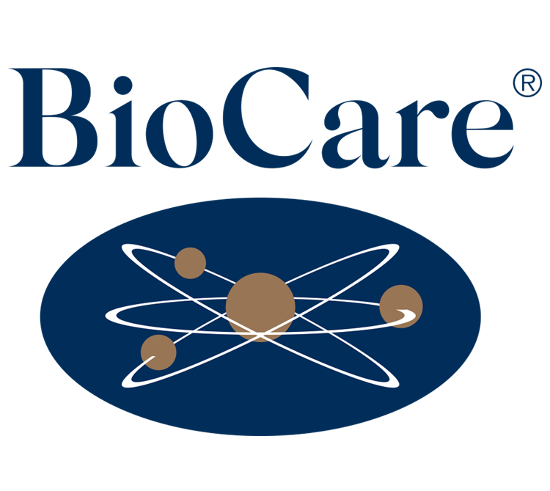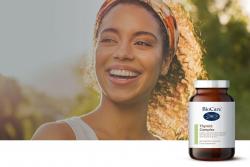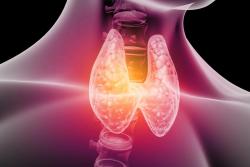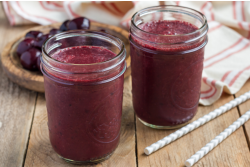It has been more than a year since the COVID pandemic hit us with full force. It’s taken a toll on all of us, affecting our finances and health. Some of these effects are more forceful and some are more subtle, with consequences yet to unveil themselves in the months and years to come.
Whilst the social restrictions are lifting in many countries, for many people who have had the virus, life isn’t quite getting back to normal as they’re left with prolonged effects of the infection – the so called ‘Long COVID’, or ‘Post-acute COVID-19 syndrome’.
The scientific community has pulled together in a combined effort to understand the triggers and drivers of long-COVID symptoms, and although a lot is yet to be discovered and understood, hopefully this effort will yield additional research to aid the “long-haulers” in the near future.
Is Long COVID a new condition or an old acquaintance? We dig into the research to uncover what happens in the body during and after the infection to help us understand the underlying factors of some of the symptoms we see, and to guide us to nutritional and lifestyle interventions that may be beneficial.
SYMPTOMS OF LONG-COVID
Even though there isn’t a clear definition or diagnostic criteria so far, Long COVID has been defined as persistent symptoms and/or delayed or long-term complications beyond 4 weeks from the onset of acute COVID-19 symptoms.1,2,3
The largest systemic review and meta-analysis to date has identified more than 50 long-term effects associated with COVID-19.4 Amongst them, the most common ones include:4,5
- Fatigue
- Shortness of breath
- Headaches
- Joint pain
- Attention disorder
- Chest pains
- Hair loss 6,7
- Reduced kidney function. 8,9,10
Almost half the patients also notice a decline in their quality of life.5 In UK alone, an estimated 1.1 million (1 in 5 who tested positive) reported symptoms persisting more than four weeks after the first suspected infection.11
It is not uncommon to be left with post-acute infectious symptoms; it’s also been observed in Acute Respiratory Distress Syndrome (ARDS),12 Severe Acute Respiratory Syndrome (SARS), and Middle East Respiratory Syndrome (MERS).13
Why are some people left with post-viral symptoms? The clue is in how our body reacts to a virus. In response to an acute infection, the immune system mounts a powerful inflammatory response. This can leave us with inflammation, tissue damage,1 and the expected sequelae of post-critical illness.14 But of course, not everyone is affected. There seems to be an association between the risk of developing Long COVID symptoms and pre-existing conditions like respiratory disease, higher body mass index, older age and individuals from ethnic minorities. 15
THE VISCIOUS CYCLE OF INFLAMMATION
Inflammation is a key tool in our immune system’s kit when fighting infections or repairing tissue after injury. It is essential to fight off a pathogen, but unfortunately sometimes it can go awry and cause further, often long-term problems. This is more likely to happen in predisposed individuals, being influenced by factors such as; genetic susceptibility, age, nutritional status, viral load exposure and route of infection, presence of other infections, pre-existing chronic diseases.4,15
It has been shown that many individuals still have a number of signs of the disease process well after the acute phase of the infection. Tests often show raised inflammatory markers; interleukin-6 (IL-6), serum ferritin, histamine, and C-reactive protein (CRP),4 and mitochondrial proteins and antioxidants [e.g. peroxiredoxin 3 (PRDX3) and carbamoyl phosphate synthase (CPS1)],16 alongside abnormal chest X-ray/computed tomography (CT).4
- STEP 1 – Tame inflammation
Ensure a nourishing anti-inflammatory diet, full of diverse, colourful, plant-rich foods, and ‘superfoods’ such as turmeric, ginger, green tea, and pomegranate. Also, supplementing with anti-inflammatory and antioxidant nutrients and botanicals to help you reach a more therapeutic dosage, would be ideal, particularly focusing on omega-3,17 curcumin,18,19 and quercetin.20,21,22
Increase the intake of antioxidants, such as vitamins C, E, selenium, beta carotene, glutathione 23 to help quench free radicals, reduce tissue damage, and improve energy levels. N-Acetyl Cysteine is also beneficial at replenishing glutathione stores.24
TIRED ALL THE TIME?
The majority of people mention fatigue as the main symptom.4 A UK based study showed that more women (54.3%) suffered with moderate or severe fatigue than men (29.6%).15
It often coincides with breathlessness (low oxygen levels), altered cognitive function, sleeping difficulties and psychological distress,25,13 and post-traumatic stress disorder (PTSD). 15
The elevations in mitochondrial proteins and antioxidants suggest ongoing mitochondrial 16 and tissue damage .26,27,28 As mitochondria are the key structures within your cells that produce energy, no wonder one of the leading symptoms of long-COVID is fatigue.
The prevalence of fatigue is in keeping with previous epidemics of SARS, H1N1, and Ebola, in which a large proportion of fatigued patients have qualified for a diagnosis of Myalgia Encephalomyelitis/Chronic Fatigue Syndrome (ME/CFS). The symptoms observed in post-COVID-19 patients, resemble in part the CFS or ME, which are characterised by at least six months of fatigue and exhaustion, driven by similar factors like hormonal and nervous dysfunction, inflammation, compromised mitochondria, and oxidative stress.29
- STEP 2 - Support the mitochondria for energy production
The first step of restoring mitochondrial health and improving energy levels is to provide plenty of antioxidants which we mentioned already. In addition, ensure a good intake of B vitamins, CoQ10, magnesium,30,31 Alpha Lipoic Acid (ALA),32 carnitine,32 and D-ribose 33 which are all involved in mitochondrial energy production.
POOR BRAIN & NERVOUS FUNCTION
The ongoing inflammation, as well as mitochondrial damage, can have a profound effect on our nervous system and brain function. Our brain uses up to 20% of all energy being produced, so if that vital function is compromised, we can see a decline in brain function which can impact us in many ways. Similar to chronic post-acute-SARS syndrome, long-COVID is also associated with depression, sleep disturbances,34 loss of sense of smell or taste,35 headaches and migraines,36 and an increased risk of stroke, intracranial haemorrhage,37 and dementia.8,37
These symptoms are linked to inflammation in the brain and the CSF (Cerebral Spinal Fluid), with high amounts of pro-inflammatory cytokines (e.g. IL-1beta, IFN-gamma,),38 cerebrovascular disease,39 low oxygen supply, side effects of medications, and the emotional aspect of having a serious illness.40 It’s also been hypothesised that the headaches can be caused by disrupted CSF drainage which might cause an increase in intracranial hypertension.41
Women with a history of psychiatric disease seem to be more affected by PTSD, depression, and anxiety,38,42 especially if they’ve spent a long time at hospital.
Beyond the virus itself, the impact of isolation, lack of social contact, and stress should not be underestimated.
- STEP 3 – Reduce stress & support brain function
Nourish your nervous system by eating a whole-food, non-processed diet with a wide variety of fruits and vegetables, and consider supplementing with a good methylated multinutrient, fish oils,43 and probiotics. Optimise your sleep and manage stress levels for additional support. Have a go at forest-bathing, as getting out in nature will have great benefits on your mental health and immune system.44 If diet and lifestyle interventions are not enough to manage your stress and anxiety, consider calming herbs such as lemon balm,45 theanine,46 and chamomile.47
LUNG DAMAGE
The ongoing inflammation, intensive medical treatments, and the virus itself,15,10 48,49 can collectively lead to damage and fibrosis of the lung tissue, making the lungs less efficient at oxygenating the body.50 Hence, shortness of breath is another common post-infectious symptom.
Those needing ICU admission and respiratory support, or suffering with lung problems before the infection, higher age, higher BMI, and ethnic minorities are also more likely to experience breathlessness post-hospital discharge.15
The lung tissue contains a number of protective antioxidants including superoxide dismutase (SOD) and glutathione peroxidase.51 During an infection, their levels may become depleted, leading to oxidative stress and increasing the risk of complications. Individuals with pneumonia often have reduced antioxidant status and it has been suggested that antioxidant supplementation may be useful to reduce disease severity.52
- STEP 4 – Support lung function
N-acetyl cysteine (NAC) protects lung tissue from damage,53 and has been shown to improve symptoms and prevent recurrences of bronchitis.54 Selenium supplementation increasesglutathione peroxidase levels,55 and may reduce the severity of pneumonia.56 Deep, slow, nose breathing is an excellent way of simultaneously increasing blood oxygenation, improving sleep quality, and reducing anxiety and depression, which may help restore energy levels post-infection.57
COMPROMISED DIGESTION
COVID-19 sufferers have been shown to have altered gut microbiota with a higher abundance of opportunistic pathogens (including Streptococcus, Rothia, Veillonella and Actinomyces),58 Candida albicans, Candida auris and Aspergillus flavus,59 and a lower abundance of beneficial bacteria (e.g. Faecalibacterium prausnitzii).60 These alterations, can also disrupt the respiratory tract through the “gut-lung axis” mucosal immune system.61 Also, the virus may directly damage the intestinal mucosa and cause digestive symptoms, but further research is needed to confirm this possibility.62
Another concern for the gut microbiome is the long term effect of using larger amounts of detergents, household cleaning products, and hand sanitisers,63 which is linked to higher incidence of inflammatory conditions and inflammation.64,65
- STEP 5 – Support your gut bacteria & digestion
A great starting point to supporting your gut function and microbiome is increasing the levels of beneficial bacteria in your diet, either via foods such as sauerkraut, kimchi, kombucha or by using a well-researched, clinically effective, and stable probiotic supplement. Also increase soluble fibre such as green vegetables, onions, oats, and pulses, which will feed the bacteria, add bulk to the stool if you have diarrhoea, and promote toxin clearance.
Long COVID as an old acquaintance
Whilst the research is still ongoing, what’s already been uncovered bears a lot of similarities with other infections and chronic conditions such as Chronic Fatigue Syndrome. Everyone’s long-COVID symptoms are likely to be different, driven by their genetic predisposition, health status before the infection, nutrient deficiencies, and the treatment used during the infection.
Identifying the underlying drivers of lingering post-infection symptoms, and how they can go on to affect our physical and mental health, facilitates implementation of a tailored nutrition and lifestyle plan that can help individuals to feel better. This is more important than ever, given the emerging problem of ‘post-viral fatigue/ syndrome.’
Got a question?
The brand you can talk to:
We have a team of Nutritionists at the end of our advice line, open to you, for product support and advice (5 days a week). 0121 433 8702 or clinicalnutrition@biocare.co.uk
Or head to our advice page where you can find Healthnotes.
Not registered for an account with BioCare®?
You can register now to receive up to date news, product information and exclusive offers whether you are a consumer, practitioner or retailer.
References:
1. Nalbandian A, Sehgal K, Gupta A, et al. Post-acute COVID-19 syndrome. Nat Med. 2021;27(4):601-615. doi:10.1038/s41591-021-01283-z
2. Datta SD, Talwar A, Lee JT. A Proposed Framework and Timeline of the Spectrum of Disease Due to SARS-CoV-2 Infection: Illness beyond Acute Infection and Public Health Implications. JAMA - J Am Med Assoc. 2020;324(22):2251-2252. doi:10.1001/jama.2020.22717
3. Raveendran A V. Long COVID-19: Challenges in the diagnosis and proposed diagnostic criteria. Diabetes Metab Syndr Clin Res Rev. 2021;15(1):145-146. doi:10.1016/j.dsx.2020.12.025
4. Lopez-Leon S, Wegman-Ostrosky T, Perelman C, et al. More than 50 Long-term effects of COVID-19: a systematic review and meta-analysis Correspondence to. medRxiv. Published online January 30, 2021:2021.01.27.21250617. doi:10.1101/2021.01.27.21250617
5. Carfì A, Bernabei R, Landi F, Group for the GAC-19 P-ACS. Persistent Symptoms in Patients After Acute COVID-19. JAMA. 2020;324(6):603. doi:10.1001/jama.2020.12603
6. Turkmen D, Altunisik N, Sener S, Colak C. Evaluation of the effects of COVID-19 pandemic on hair diseases through a web-based questionnaire. Dermatol Ther. 2020;33(6):e13923. doi:10.1111/dth.13923
7. Rivetti N, Barruscotti S, Policlinico San Matteo F, di Dermatologia A, Clinico Beato Matteo I. MANAGEMENT OF TELOGEN EFFLUVIUM DURING THE COVID-19 EMERGENCY: PSYCHOLOGICAL IMPLICATIONS. doi:10.1111/dth.13648
8. Robbins-Juarez SY, Qian L, King KL, et al. Outcomes for Patients With COVID-19 and Acute Kidney Injury: A Systematic Review and Meta-Analysis. Kidney Int Reports. 2020;5(8):1149-1160. doi:10.1016/j.ekir.2020.06.013
9. Stevens JS, King KL, Robbins-Juarez SY, et al. High rate of renal recovery in survivors of COVID-19 associated acute renal failure requiring renal replacement therapy. PLoS One. 2020;15(12 December). doi:10.1371/journal.pone.0244131
10. Huang C, Huang L, Wang Y, et al. 6-month consequences of COVID-19 in patients discharged from hospital: a cohort study. Lancet. 2021;397(10270):220-232. doi:10.1016/S0140-6736(20)32656-8
11. What might long COVID mean for the nation’s health? | The Health Foundation. Accessed May 12, 2021. https://www.health.org.uk/news-and-comment/blogs/w...
12. Neufeld KJ, Leoutsakos JMS, Yan H, et al. Fatigue Symptoms During the First Year Following ARDS. Chest. 2020;158(3):999-1007. doi:10.1016/j.chest.2020.03.059
13. Ahmed H, Patel K, Greenwood DC, et al. Long-term clinical outcomes in survivors of severe acute respiratory syndrome (SARS) and Middle East respiratory syndrome (MERS) coronavirus outbreaks after hospitalisation or ICU admission: A systematic review and meta-analysis. J Rehabil Med. 2020;52(5). doi:10.2340/16501977-2694
14. Inoue S, Hatakeyama J, Kondo Y, et al. Post‐intensive care syndrome: its pathophysiology, prevention, and future directions. Acute Med Surg. 2019;6(3):233-246. doi:10.1002/ams2.415
15. Halpin SJ, McIvor C, Whyatt G, et al. Postdischarge symptoms and rehabilitation needs in survivors of COVID‐19 infection: A cross‐sectional evaluation. J Med Virol. 2021;93(2):1013-1022. doi:10.1002/jmv.26368
16. Heywood WE, Doykov I, Hällqvist J, Gilmour KC, Grandjean L, Mills K. “The long tail of Covid-19” - The detection of a prolonged inflammatory response after a SARS-CoV-2 infection in asymptomatic and mildly affected patients. F1000Research. 2021;9. doi:10.12688/f1000research.27287.2
17. Calder PC. Omega-3 fatty acids and inflammatory processes. Nutrients. 2010;2(3):355-374. doi:10.3390/nu2030355
18. Zabetakis I, Lordan R, Norton C, Tsoupras A. Covid-19: The inflammation link and the role of nutrition in potential mitigation. Nutrients. 2020;12(5). doi:10.3390/nu12051466
19. Dourado D, Freire DT, Pereira DT, et al. Will curcumin nanosystems be the next promising antiviral alternatives in COVID-19 treatment trials? Biomed Pharmacother. 2021;139:111578. doi:10.1016/j.biopha.2021.111578
20. Shaik Y, Caraffa A, Ronconi G, Lessiani G, Conti P. Impact of polyphenols on mast cells with special emphasis on the effect of quercetin and luteolin. Cent Eur J Immunol. 2018;43(4):476-481. doi:10.5114/ceji.2018.81347
21. Davis JM, Murphy EA, Carmichael MD. Effects of the dietary flavonoid quercetin upon performance and health. Curr Sports Med Rep. 2009;8(4):206-213. doi:10.1249/JSR.0b013e3181ae8959
22. Agrawal PK, Agrawal C, Blunden G. Quercetin: Antiviral Significance and Possible COVID-19 Integrative Considerations. Nat Prod Commun. 2020;15(12):1-10. doi:10.1177/1934578X20976293
23. Picard M, McEwen BS, Epel ES, Sandi C. An energetic view of stress: Focus on mitochondria. Front Neuroendocrinol. 2018;49:72-85. doi:10.1016/j.yfrne.2018.01.001
24. De Flora S, Balansky R, La Maestra S. Rationale for the use of N-acetylcysteine in both prevention and adjuvant therapy of COVID-19. FASEB J. 2020;34(10):13185-13193. doi:10.1096/fj.202001807
25. Halpin SJ, McIvor C, Whyatt G, et al. Postdischarge symptoms and rehabilitation needs in survivors of COVID-19 infection: A cross-sectional evaluation. J Med Virol. 2021;93(2):1013-1022. doi:10.1002/jmv.26368
26. Qin S, Zheng J hong, Xia Z huan, Qian J, Deng C liang, Yang S lin. CTHRC1 promotes wound repair by increasing M2 macrophages via regulating the TGF-β and notch pathways. Biomed Pharmacother. 2019;113:108594. doi:10.1016/j.biopha.2019.01.055
27. Xu Y, Schnorrer P, Proietto A, et al. IL-10 Controls Cystatin C Synthesis and Blood Concentration in Response to Inflammation through Regulation of IFN Regulatory Factor 8 Expression. J Immunol. 2011;186(6):3666-3673. doi:10.4049/jimmunol.1001934
28. Zhao Y, Qin L, Zhang P, et al. Longitudinal COVID-19 profiling associates IL-1RA and IL-10 with disease severity and RANTES with mild disease. JCI Insight. 2020;5(13). doi:10.1172/jci.insight.139834
29. Wong TL, Weitzer DJ. Long COVID and Myalgic Encephalomyelitis/Chronic Fatigue Syndrome (ME/CFS)-A Systemic Review and Comparison of Clinical Presentation and Symptomatology. Medicina (Kaunas). 2021;57(5):418. doi:10.3390/medicina57050418
30. Depeint F, Bruce WR, Shangari N, Mehta R, O’Brien PJ. Mitochondrial function and toxicity: Role of the B vitamin family on mitochondrial energy metabolism. Chem Biol Interact. 2006;163(1-2):94-112. doi:10.1016/j.cbi.2006.04.014
31. Wesselink E, Koekkoek WAC, Grefte S, Witkamp RF, van Zanten ARH. Feeding mitochondria: Potential role of nutritional components to improve critical illness convalescence. Clin Nutr. 2019;38(3):982-995. doi:10.1016/j.clnu.2018.08.032
32. Nicolson GL. Mitochondrial dysfunction and chronic disease: Treatment with natural supplements. Integr Med. 2014;13(4):35-43. Accessed May 17, 2021. /pmc/articles/PMC4566449/
33. Mahoney DE, Hiebert JB, Thimmesch A, et al. Understanding D-Ribose and Mitochondrial Function. Adv Biosci Clin Med. 2018;6(1):1. doi:10.7575/aiac.abcmed.v.6n.1p.1
34. Nordvig AS, Fong KT, Willey JZ, et al. Potential Neurologic Manifestations of COVID-19. Neurol Clin Pract. 2021;11(2):e135-e146. doi:10.1212/cpj.0000000000000897
35. Mazza MG, De Lorenzo R, Conte C, et al. Anxiety and depression in COVID-19 survivors: Role of inflammatory and clinical predictors. Brain Behav Immun. 2020;89:594-600. doi:10.1016/j.bbi.2020.07.037
36. Caronna E, Ballvé A, Llauradó A, et al. Headache: A striking prodromal and persistent symptom, predictive of COVID-19 clinical evolution. Cephalalgia. 2020;40(13):1410-1421. doi:10.1177/0333102420965157
37. Xie Y, Bowe B, Maddukuri G, Al-Aly Z. Comparative evaluation of clinical manifestations and risk of death in patients admitted to hospital with covid-19 and seasonal influenza: cohort study. BMJ. 2020;371. doi:10.1136/bmj.m4677
38. Vindegaard N, Benros ME. COVID-19 pandemic and mental health consequences: Systematic review of the current evidence. Brain Behav Immun. 2020;89:531-542. doi:10.1016/j.bbi.2020.05.048
39. Baldini T, Asioli GM, Romoli M, et al. Cerebral venous thrombosis and severe acute respiratory syndrome coronavirus-2 infection: A systematic review and meta-analysis. Eur J Neurol. 2021;00:1-13. doi:10.1111/ene.14727
40. Varatharaj A, Thomas N, Ellul MA, et al. Neurological and neuropsychiatric complications of COVID-19 in 153 patients: a UK-wide surveillance study. The Lancet Psychiatry. 2020;7(10):875-882. doi:10.1016/S2215-0366(20)30287-X
41. Wostyn P. COVID-19 and chronic fatigue syndrome: Is the worst yet to come? Med Hypotheses. 2021;146:110469. doi:10.1016/j.mehy.2020.110469
42. Pappa S, Ntella V, Giannakas T, Giannakoulis VG, Papoutsi E, Katsaounou P. Prevalence of depression, anxiety, and insomnia among healthcare workers during the COVID-19 pandemic: A systematic review and meta-analysis. Brain Behav Immun. 2020;88:901-907. doi:10.1016/j.bbi.2020.05.026
43. Kuszewski JC, Howe PRC, Wong RHX. An exploratory analysis of changes in mental wellbeing following curcumin and fish oil supplementation in middle-aged and older adults. Nutrients. 2020;12(10):1-13. doi:10.3390/nu12102902
44. Wen Y, Yan Q, Pan Y, Gu X, Liu Y. Medical empirical research on forest bathing (Shinrin-yoku): A systematic review. Environ Health Prev Med. 2019;24(1). doi:10.1186/s12199-019-0822-8
45. Cases J, Ibarra A, Feuillère N, Roller M, Sukkar SG. Pilot trial of Melissa officinalis L. leaf extract in the treatment of volunteers suffering from mild-to-moderate anxiety disorders and sleep disturbances. Med J Nutrition Metab. 2011;4(3):211-218. doi:10.1007/s12349-010-0045-4
46. Hidese S, Ogawa S, Ota M, et al. Effects of L-Theanine administration on stress- related symptoms and cognitive functions in healthy adults: A randomized controlled trial. Nutrients. 2019;11(10). doi:10.3390/nu11102362
47. Chang SM, Chen CH. Effects of an intervention with drinking chamomile tea on sleep quality and depression in sleep disturbed postnatal women: A randomized controlled trial. J Adv Nurs. 2016;72(2):306-315. doi:10.1111/jan.12836
48. McElvaney OJ, McEvoy NL, McElvaney OF, et al. Characterization of the inflammatory response to severe COVID-19 Illness. Am J Respir Crit Care Med. 2020;202(6):812-821. doi:10.1164/rccm.202005-1583OC
49. Coker RK, Laurent GJ, Jevery PK, Bois RM Du, Black CM, Mcanulty RJ. Localisation of Transforming Growth Factor 1 and 3 MRNA Transcripts in Normal and Fibrotic Human Lung. Accessed May 5, 2021. www.thoraxjnl.com
50. Nalbandian A, Sehgal K, Gupta A, et al. Post-acute COVID-19 syndrome. Nat Med. 2021;27(4):601-615. doi:10.1038/s41591-021-01283-z
51. Kinnula VL, Crapo JD. Superoxide dismutases in the lung and human lung diseases. Am J Respir Crit Care Med. 2003;167(12):1600-1619. doi:10.1164/rccm.200212-1479SO
52. Katsoulis K, Kontakiotis T, Baltopoulos G, Kotsovili A, Legakis IN. Total antioxidant status and severity of community-acquired pneumonia: Are they correlated? Respiration. 2005;72(4):381-387. doi:10.1159/000086252
53. Van Schayck CP, Dekhuijzen PNR, Gorgels WJMJ, et al. Are anti-oxidant and anti-inflammatory treatments effective in different subgroups of COPD? A hypothesis. Respir Med. 1998;92(11):1259-1264. doi:10.1016/S0954-6111(98)90225-6
54. Grandjean EM, Berthet P, Ruffmann R, Leuenberger P. Efficacy of oral long-term N-acetylcysteine in chronic bronchopulmonary disease: A meta-analysis of published double-blind, placebo-controlled clinical trials. Clin Ther. 2000;22(2):209-221. doi:10.1016/S0149-2918(00)88479-9
55. Mahmoodpoor A, Hamishehkar H, Sanaie S, et al. Antioxidant reserve of the lungs and ventilator-associated pneumonia: A clinical trial of high dose selenium in critically ill patients. J Crit Care. 2018;44:357-362. doi:10.1016/j.jcrc.2017.12.016
56. Manzanares W, Biestro A, Torre MH, Galusso F, Facchin G, Hardy G. High-dose selenium reduces ventilator-associated pneumonia and illness severity in critically ill patients with systemic inflammation. Intensive Care Med. 2011;37(7):1120-1127. doi:10.1007/s00134-011-2212-6
57. Siddiq MAB, Rathore FA, Clegg D, Rasker JJ. Pulmonary rehabilitation in COVID-19 patients: A scoping review of current practice and its application during the pandemic. Turkish J Phys Med Rehabil. 2021;66(4):480-494. doi:10.5606/TFTRD.2020.6889
58. Gu S, Chen Y, Wu Z, et al. Alterations of the gut microbiota in patients with coronavirus disease 2019 or H1N1 influenza. Clin Infect Dis. 2020;71(10):2669-2678. doi:10.1093/cid/ciaa709
59. Zuo T, Zhan H, Zhang F, et al. Alterations in Fecal Fungal Microbiome of Patients With COVID-19 During Time of Hospitalization until Discharge. Gastroenterology. 2020;159(4):1302-1310.e5. doi:10.1053/j.gastro.2020.06.048
60. Zuo T, Zhang F, Lui GCY, et al. Alterations in Gut Microbiota of Patients With COVID-19 During Time of Hospitalization. Gastroenterology. 2020;159(3):944-955.e8. doi:10.1053/j.gastro.2020.05.048
61. Budden KF, Gellatly SL, Wood DLA, et al. Emerging pathogenic links between microbiota and the gut-lung axis. Nat Rev Microbiol. 2017;15(1):55-63. doi:10.1038/nrmicro.2016.142
62. Pan L, Mu M, Yang P, et al. Clinical characteristics of COVID-19 patients with digestive symptoms in Hubei, China: A descriptive, cross-sectional, multicenter study. Am J Gastroenterol. 2020;115(5):766-773. doi:10.14309/ajg.0000000000000620
63. Ejtahed HS, Hasani-Ranjbar S, Siadat SD, Larijani B. The most important challenges ahead of microbiome pattern in the post era of the COVID-19 pandemic. J Diabetes Metab Disord. Published online 2020:1. doi:10.1007/s40200-020-00579-0
64. Rook GAW. Hygiene hypothesis and autoimmune diseases. Clin Rev Allergy Immunol. 2012;42(1):5-15. doi:10.1007/s12016-011-8285-8
65. Eder W, Ege MJ, von Mutius E. The Asthma Epidemic. N Engl J Med. 2006;355(21):2226-2235. doi:10.1056/nejmra054308






